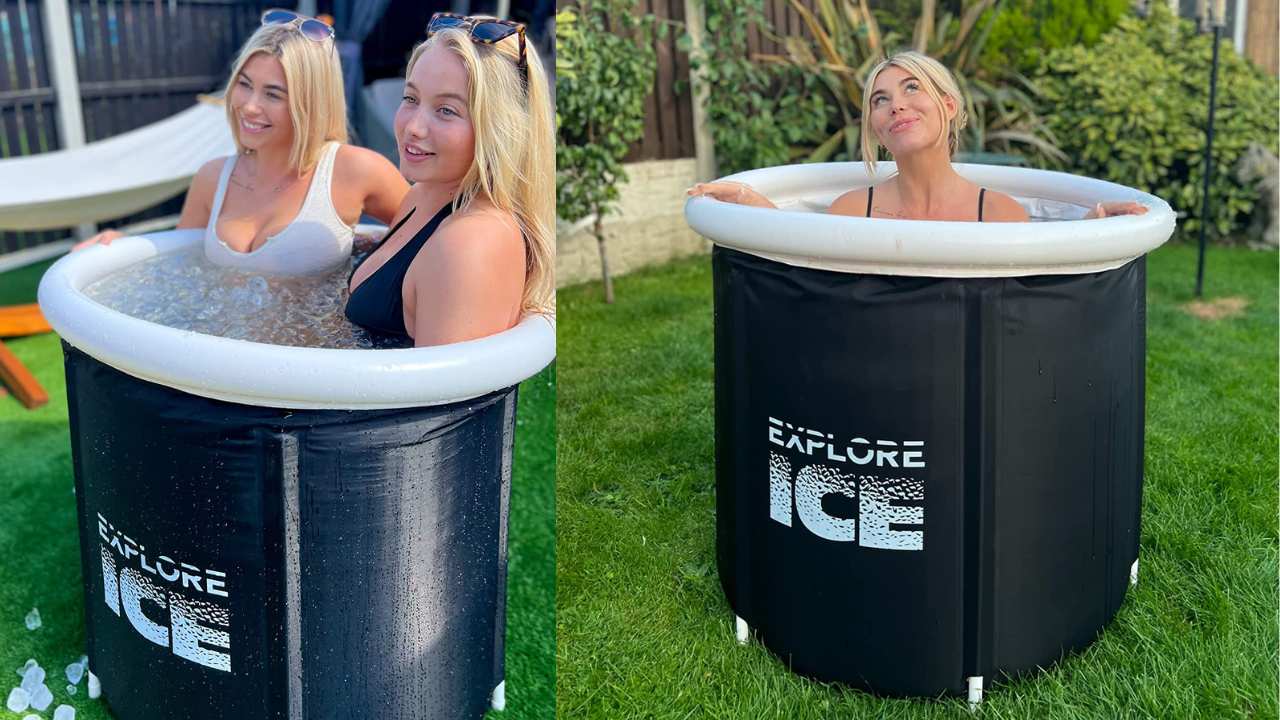The Ins and Outs of Ice Baths: How Cold Should An Ice Bath Be?
Understand what an ice bath is, why it's beneficial, as well as tips on how to make sure you're using optimal temperatures for maximum effects.

Ice baths have become increasingly popular among athletes and fitness enthusiasts as a method for aiding in muscle recovery, reducing inflammation, and increasing circulation.
But how cold should an ice bath be to provide maximum benefits? In this post, we will cover everything you need to know about ice baths, including the benefits, risks, and how to prepare for an ice bath routine.
What is an Ice Bath?
An ice bath, also known as cold water immersion therapy, involves immersing your body in cold water for a set amount of time.
The typical water temperature is between 50°F to 59°F (10°C to 15°C), but some enthusiasts prefer temperatures as low as 35°F (1°C).
Taking a cold plunge can help to lower your core body temperature and is used as a cold therapy in order to help with recovery.

Benefits of Taking an Ice Bath
Ice baths offer a variety of benefits, the most well-known of which is muscle recovery after intense physical activity.
The cold water helps to reduce inflammation and muscle soreness, as well as decrease lactic acid buildup, which often leads to muscle fatigue. Additionally, ice baths have been shown to increase circulation, which promotes healing and accelerates recovery.
An ice bath will affect your blood vessels by constricting them, which helps reduce inflammation and swelling in affected areas. This can also help to reduce potential tissue damage and prevent any further injury.
Finally, cold water immersion has been shown to stimulate the release of endorphins (feel-good hormones), which can help reduce stress levels.
Potential Risks Associated with Ice Baths
While ice baths can offer numerous benefits, there are also risks associated with cold-water immersion.
The most significant risk is hypothermia, which occurs when the body temperature drops dangerously low.
Other potential risks include shock, skin damage, and numbness. It's essential to speak with a healthcare professional before beginning an ice bath routine, especially if you have pre-existing medical conditions that may increase your risk.
How Often Should You Take an Ice Bath?
The frequency of your ice bath routine should depend on your individual needs, training schedule, and overall fitness level.
Some athletes may benefit from ice baths once or twice a week, while others may require one after every training session.
It's recommended that you give your body time to recover between ice bath sessions and avoid overdoing it.

Preparing for Your Ice Bath Routine
Before beginning your ice bath routine, there are a few things you can do to prepare yourself mentally and physically.
It's important to stay hydrated before and after your ice bath, as dehydration can increase the risk of hypothermia. Additionally, you should wear a warm robe or sweatshirt and have a warm beverage ready to consume immediately after your bath.
Some people go as far as doing breathing exercises, visualizing the cold water, or playing calming music to help prepare. Ultimately, the important thing is to have a clear plan of action and be prepared for any potential discomfort.
Temperature and Time – How Long Should You Stay in the Cold Water?
When using an ice bath for muscle recovery, the recommended time frame for immersion is between five and ten minutes, but this can vary depending on your individual needs.
It's crucial to pay attention to your body's warning signs, such as shivers, numbness or stinging, and never push past the point of comfort.
The effects of hypothermia can occur at any temperature, so it's essential to stay within a safe range. Generally speaking, the recommended temperature range is between 50°F to 59°F (10°C to 15°C).
If you're feeling particularly brave, you can lower the temperature even further to 35°F (1°C), but this should only be attempted by experienced users.
Recovering from Your First Ice Bath Experience
After your first ice bath, you may experience some muscle soreness and stiffness, but this is entirely normal.
You can aid in your recovery by staying hydrated, stretching, and engaging in light physical activity the day after your ice bath. If you experience any prolonged pain or discomfort, consult with a healthcare professional.
Tips for Making Your Ice Bath Easier
If you are new to ice baths or find them uncomfortable, there are a few tips you can utilize to make the experience more manageable.
You can start with a slightly warmer water temperature and gradually decrease it over time. Alternatively, you can wear a neoprene wetsuit or swim cap to reduce the shock of the cold water.
Pro tip: Finally, one of the most important tips for making ice baths easier is to focus on your breathing. Taking deep breaths can help reduce stress and keep you in the moment, which is key to staying comfortable during an ice bath.
When done properly, ice baths can be a powerful tool for improving athletic performance and promoting muscle recovery.
Does A Cold Shower Have The Same Benefits
Taking cold showers has its own set of benefits and can provide some similar effects to ice baths. However, the immersion method used in an ice bath is more powerful when it comes to reducing inflammation, improving mobility, and relieving muscle soreness.
If you're looking for a less intense form of cold exposure, then cold showers may be a better option for you.
The ideal ice bath temperature is around 50 degrees F. Once you have gotten the water to the desired temperature submerge your entire body to get the full benefits!
Final Thoughts
An ice bath can be a useful tool in aiding in muscle recovery, reducing inflammation, and increasing circulation. However, it's essential to speak with a healthcare professional before beginning an ice bath routine and to pay attention to your body's warning signs. Remember to always stay hydrated, wear warm clothing, and listen to your body's needs. With proper preparation and care, you can reap the benefits of an ice bath safely and effectively.

